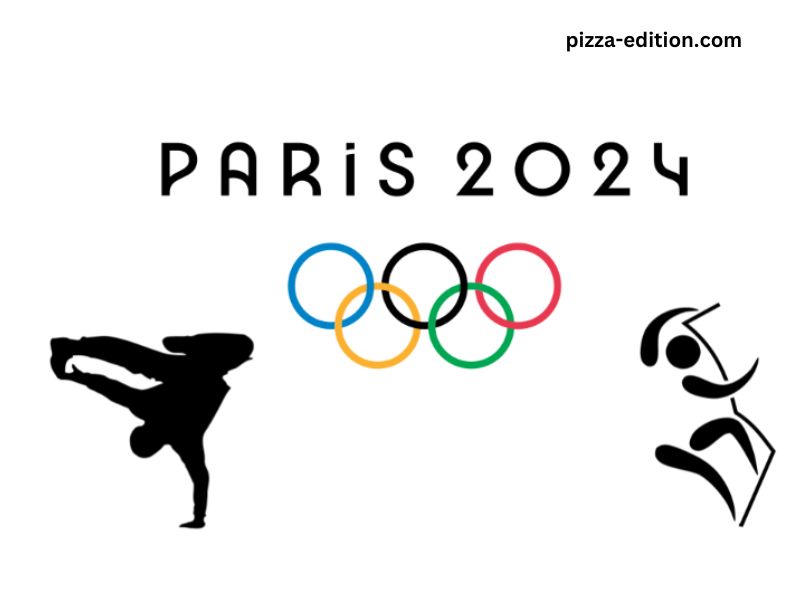The Summer Olympics, often referred to simply as the Olympics, is one of the largest and most prestigious multi-sport events in the world. Held every four years, it features a wide array of sports, bringing together athletes from across the globe to compete at the highest level. The Olympics celebrate athleticism, international unity, and the spirit of competition. But what exactly are the sports that make up the Summer Olympics? This article provides an in-depth look at the sports included in the Summer Games, including traditional staples and newer additions.
1. Athletics
Athletics, commonly known as track and field, is the centerpiece of the Summer Olympics. It encompasses a wide range of events, including sprints, middle-distance, and long-distance races, hurdles, relays, jumps (long jump, triple jump, high jump, and pole vault), throws (shot put, discus, javelin, and hammer), and combined events like the decathlon and heptathlon. The marathon, a 42.195-kilometer race, is one of the most iconic events in the Olympics, often concluding the Games.
2. Swimming
Swimming is another cornerstone of the Summer Olympics, featuring a variety of events that test speed, endurance, and technique. Competitions are held in four strokes: freestyle, backstroke, breaststroke, and butterfly. Distances range from 50 meters to 1500 meters, with individual and relay events. The medley events combine all four strokes, adding complexity and excitement to the competition. Swimming also includes open water events, where athletes compete in longer distances in natural bodies of water.
3. Gymnastics
Gymnastics is divided into three main categories: artistic gymnastics, rhythmic gymnastics, and trampoline. Artistic gymnastics, one of the most popular and widely recognized sports in the Olympics, includes events like the floor exercise, vault, uneven bars, and balance beam for women, and the floor exercise, vault, pommel horse, rings, parallel bars, and horizontal bar for men. Rhythmic gymnastics is a women-only sport, where athletes perform routines with apparatus like ribbons, hoops, balls, and clubs. Trampoline gymnastics involves athletes performing acrobatic moves while bouncing on a trampoline.
4. Cycling
Cycling at the Summer Olympics is divided into four disciplines: road cycling, track cycling, mountain biking, and BMX. Road cycling includes the road race and the time trial, both of which test speed, endurance, and strategy. Track cycling takes place in a velodrome and features events like the sprint, keirin, team pursuit, and omnium. Mountain biking is a cross-country race on rugged terrain, while BMX includes both racing and freestyle events, where riders perform tricks and stunts.
5. Basketball
Basketball has been a staple of the Summer Olympics since 1936. The competition includes both men’s and women’s tournaments, with teams from around the world competing for the gold medal. In recent years, 3×3 basketball, a shorter, faster-paced version of the game, has also been added to the Olympic program, further diversifying the sport’s presence at the Games.
6. Soccer (Football)
Soccer, or football as it is known outside North America, is one of the most popular sports in the world and a significant part of the Summer Olympics. The tournament features both men’s and women’s competitions, with teams representing their countries. The Olympic soccer tournament is unique in that it typically features younger players (under 23 for men), with a few experienced players allowed, which differentiates it from other major international competitions like the FIFA World Cup.
7. Tennis
Tennis was first included in the Olympics in 1896, removed after 1924, and then reintroduced in 1988. The Olympic tennis tournament includes men’s and women’s singles, men’s and women’s doubles, and mixed doubles. Competing in the Olympics is a prestigious opportunity for tennis players, who usually compete individually or in pairs throughout the professional circuit.
8. Boxing
Boxing has been part of the Olympic Games since 1904. The sport is divided into weight classes, and athletes compete in a knockout format. Both men’s and women’s boxing are included, with the latter being introduced in 2012. Olympic boxing is unique because the competitors wear protective headgear, and bouts are shorter compared to professional boxing, emphasizing speed and technique.
9. Wrestling
Wrestling is one of the oldest sports in the Olympics, with roots tracing back to the ancient Games. The sport includes two main styles: Greco-Roman and freestyle. Greco-Roman wrestling prohibits holds below the waist, focusing on upper body strength and technique, while freestyle wrestling allows the use of legs in both offense and defense. Both styles have multiple weight classes for men, and freestyle wrestling includes a women’s competition.
10. Judo
Judo, a modern martial art that originated in Japan, has been a part of the Olympics since 1964. The sport involves grappling techniques, where the objective is to throw or pin the opponent, or force them into submission using joint locks or chokeholds. Judo is contested in weight classes for both men and women, and it is one of the few martial arts represented in the Olympics.
11. Fencing
Fencing is one of the original sports included in the modern Olympic Games, with roots in European swordsmanship. The sport is divided into three disciplines: foil, epee, and sabre, each with different rules and techniques. Fencers compete in individual and team events for both men and women. The objective is to score points by making contact with the opponent in the valid target area, with matches characterized by speed, precision, and strategy.
12. Rowing
Rowing is a water sport that has been a part of the Olympics since 1900. The sport includes a variety of boat classes, ranging from single sculls to eight-person crews, with competitions held over a 2000-meter course. Rowing tests endurance, strength, and teamwork, with both men’s and women’s events included in the Olympic program. Lightweight rowing, which features athletes in lower weight categories, adds an additional level of strategy to the competition.
13. Sailing
Sailing has been included in the Olympics since 1900 and features a variety of boat classes, each with its own unique characteristics. The sport tests not only physical skill and endurance but also tactical decision-making and knowledge of weather conditions. Both men’s and women’s events are contested, with competitors racing over a course marked by buoys, aiming to be the first to cross the finish line.
14. Equestrian
Equestrian events have been a part of the Olympics since 1900 and are unique in that they are one of the few Olympic sports where men and women compete on equal terms. The sport includes three disciplines: dressage, show jumping, and eventing. In dressage, horse and rider perform a series of predetermined movements from memory. Show jumping involves navigating a course of obstacles, with penalties for knocking down rails or exceeding the time limit. Eventing is a combination of dressage, cross-country, and show jumping, testing the versatility of both horse and rider.
15. Archery
Archery was first included in the Olympics in 1900 and then reintroduced in 1972 after a long absence. The sport involves shooting arrows at a target from a set distance, with points awarded based on how close the arrow lands to the center of the target. Archery includes individual and team events for both men and women, with competitors needing a combination of precision, focus, and mental fortitude to succeed.
16. Volleyball
Volleyball was added to the Olympics in 1964, with both indoor and beach volleyball included in the program. Indoor volleyball is played on a hard court with six players on each team, while beach volleyball is played on sand with two players per team. Both versions of the sport require agility, coordination, and teamwork, with matches often decided by narrow margins.
17. Handball
Handball is a fast-paced team sport that has been part of the Olympics since 1972. The game is played indoors, with seven players on each team, including a goalkeeper. The objective is to score by throwing a ball into the opponent’s goal, with matches characterized by high-speed action and frequent scoring. Handball is popular in Europe, and the Olympic tournament features some of the best teams from around the world.
18. Badminton
Badminton, introduced to the Olympics in 1992, is a racket sport that is popular in Asia and parts of Europe. The Olympic competition includes men’s and women’s singles, men’s and women’s doubles, and mixed doubles. The sport is known for its fast-paced rallies and requires quick reflexes, agility, and precision.
19. Table Tennis
Table tennis, also known as ping pong, became an Olympic sport in 1988. The competition includes men’s and women’s singles, men’s and women’s doubles, and mixed doubles. The sport is particularly popular in Asia, where it is dominated by countries like China. Table tennis requires incredible hand-eye coordination, quick reflexes, and strategic thinking.
20. Weightlifting
Weightlifting has been a part of the Olympics since 1896. The sport includes two main lifts: the snatch and the clean and jerk. Athletes compete in different weight classes, with the objective of lifting the heaviest weight possible in each lift. Weightlifting tests not only physical strength but also technique and mental focus.
21. Shooting
Shooting is one of the original sports of the modern Olympic Games, with events for both men and women. The sport includes various disciplines, such as rifle, pistol, and shotgun events, each requiring different skills and techniques. Athletes compete in precision shooting at stationary targets or in skeet and trap shooting, where clay targets are launched into the air.
22. Golf
Golf was reintroduced to the Olympics in 2016 after a 112-year absence. The Olympic golf tournament includes men’s and women’s individual stroke play, where the goal is to complete the course in the fewest number of strokes. The inclusion of golf in the Olympics has brought some of the sport’s biggest stars to the Games, adding to its global appeal.
23. Modern Pentathlon
The modern pentathlon is a unique Olympic event that combines five different sports: fencing, swimming, equestrian show jumping, and a combined event of pistol shooting and cross-country running. The sport was designed to test the skills of a soldier and has been a part of the Olympics since 1912. The modern pentathlon is one of the most challenging events in the Olympics, requiring versatility and endurance.
24. Surfing, Skateboarding, and Sport Climbing
These three sports were added to the Olympic program for the Tokyo 2020 Games, reflecting the evolving interests of younger audiences and the growing global popularity of action sports. Surfing competitions are held in the ocean, with athletes judged on their ability to ride waves. Skateboarding includes street and park events, where competitors perform tricks and stunts on various obstacles. Sport climbing is a timed event where athletes race to the top of a climbing wall.
25. Rugby Sevens
Rugby sevens, a faster-paced, seven-a-side version of rugby union, was reintroduced to the Olympics in 2016. The sport features short, intense matches and is known for its exciting, high-scoring games. Both men’s and women’s tournaments are held, and the sport has quickly become a fan favorite.
Conclusion
The Summer Olympics are a celebration of athletic diversity, featuring a wide range of sports that test different aspects of human physical and mental capabilities. From the traditional disciplines of athletics and swimming to newer additions like surfing and skateboarding, the Olympics offer something for everyone. As the Games continue to evolve, they will likely introduce more sports that reflect the changing landscape of global athletic competition.




